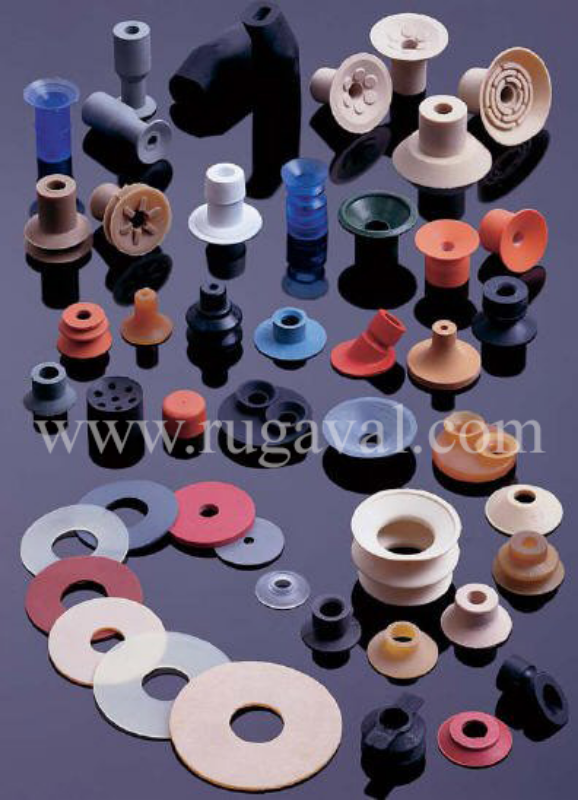Rubber Sucker Applications

The principle on which Rubber suckers work : When the sucker is pressed against the surface, it squeeze out the air that is behind it. The atmospheric pressure on the outside of the sucker holds its rim firmly against the smooth surface.
Rubber Sucker Applications
Rubber sucker a device used in toys, sunlight blocker - suction cups, suction clamps and various other places where "sticking" is required for temporary period and when you don't want to use glue.
The principle on which Rubber suckers work : When the sucker is pressed against the surface, it squeeze out the air that is behind it. The atmospheric pressure on the outside of the sucker holds its rim firmly against the smooth surface.
What is Pressure?
The pressure is thrust per unit area, hence it is directly proportional to thrust and inversely proportional to area.
The units used for pressure is pounds per square inch, Newtons per square meter, or Pascals. Atmosphere, bar, torr, and meters sea water are the other units that are used for expressing pressure.
Pascal is the SI unit of pressure and it is a derived unit. Following is the equation that is used for expressing pressure:
P = F/A
Where,
- P is the pressure
- F is the force acting per unit area
- A is the unit area
The interesting part about pressure is that pressure is a scalar quantity that is it has only magnitude but no direction. Pressure can be either a positive or negative value.
Everyday examples of pressure are:
- The working of the vacuum cleaner is an example of pressure. The fan inside the vacuum creates a low-pressure region which makes it easy to suck the dust particles inside the vacuum.
- Using a knife for cutting is another example of pressure. The area exposed from the knife is small but the pressure is high enough to cut the vegetables and fruits.
It’s actually one of the great inventions of mankind, made possible by early experiments on the “evacuation” (that is what they called it in the old textbooks) of air from flasks.
When you evacuate something, atmospheric air at normal pressure (which is sea-level pressure for most experimenters) presses on it from all sides, because 17th century scientists discovered that “nature abhors a vacuum”.
Grippers are industrial masterpieces.
Grippers are active links between the handling equipment and the workpiece or in a more general sense between the grasping organ (normally the gripper fingers) and the object to be acquired. Their functions depend on specific applications and include:
• Temporary maintenance of a definite position and orientation of the workpiece relative to the gripper and the handling equipment
• Retaining of static (weight), dynamic (motion, acceleration or deceleration) or process specific forces and moments.
• Determination and change of position and orientation of the object relative to the handling equipment by means of wrist axes.
• Specific technical operations performed with, or in conjunction with, the gripper.
Grippers are not only required for use with industrial robots: they are a universal component in automation. Grippers operate with:
• Industrial robots (handling and manipulation of objects).
• Hard automation (assembling, microassembling, machining, and packaging).
• NC machines (tool change) and special purpose machines. • Hand-guided manipulators (remote prehension, medical, aerospace, nautical).
